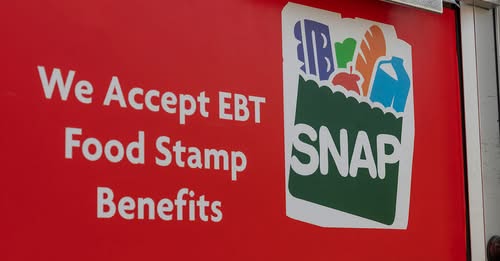
- Details
- By Shaun Griswold
Breaking News. Late Friday night, the U.S. Supreme Court granted the Trump administration’s request to pause food aid benefits while a lower appeals court decides whether Supplemental Nutrition Assistance Program (SNAP) benefits will be paid out in full across the country this November.
What is means for over half million Native Americans SNAP recipients spread over multiple states is yet to be determined.
The administrative stay, issued by Supreme Court Justice Ketanji Brown Jackson, allows the 1st U.S. Circuit Court of Appeals time to finish its decision on whether the federal government should use additional reserve funds to fully pay SNAP benefits, the court said.
The Supreme Court order will remain in effect for 48 hours after the 1st Circuit issues its opinion.
The order is the latest action in ongoing court battles that have tied up food aid for at least 42 million Americans this month amid the federal government shutdown. It comes after the Department of Justice requested a pause on an order by a federal judge in Rhode Island directing the full payment of SNAP benefits by the end of Friday.
The matter at hand would not stop the payment process already underway to move $6 billion from a contingency fund the U.S. Department of Agriculture (USDA) activated due to the shutdown. That move required orders from two federal judges to release funds for direct food aid to SNAP recipients.
Nor would the Supreme Court’s action prevent states that have already distributed full SNAP payments to recipients, as reported in at least seven states, including Oregon and California. Some states, such as New Mexico, have used their own emergency funds to cover losses resulting from the USDA’s initial refusal—and subsequent delay—to pay from the federal account.
On Friday afternoon, the USDA also alerted states that it would work to comply with the judge’s order to make full payments. In a memo sent to state governments, the Food and Nutrition Service said it is working to issue full SNAP benefits for November.
In a letter, Patrick A. Penn, deputy undersecretary of the Food, Nutrition, and Consumer Services division of the USDA, wrote:
"FNS is working towards implementing November 2025 full benefit issuances in compliance with the November 6, 2025, order from the District Court of Rhode Island. Later today, FNS will complete the processes necessary to make funds available to support your subsequent transmission of full issuance files to your EBT processor."
Lawsuits filed last week by states, cities, nonprofits, and unions forced the USDA to release dollars from a $6 billion contingency fund approved by Congress in 2024. The USDA initially estimated the fund would cover only half of SNAP payments—a miscalculation admitted in court—and later revised that estimate, stating it was responsible for ensuring payments reached recipients. The agency now says the fund is expected to cover up to two-thirds of SNAP payments for the month.
In its request filed Friday morning, the DOJ said $5.25 billion remained in the contingency fund at the start of October to cover the food assistance program, which carries monthly operational costs between $8 billion and $9 billion.
The appeal came a day after U.S. District Judge John J. McConnell Jr. ordered the government to fully fund November SNAP payments, directing the USDA to transfer money from a fund created by Section 32 of the Agricultural Adjustment Act of 1935. Section 32 is financed through collected tariffs and supports Child Nutrition Programs.
That division over whether to use Section 32 funds to fully fund SNAP in November is now at the heart of the case and may ultimately be decided by the Supreme Court.
The appeal was filed in the 1st U.S. Circuit Court of Appeals, which will determine the next steps. Congress could also resolve the issue by ending what has become the longest federal government shutdown in U.S. history.
Justice Jackson wrote, “At 6:08 p.m., the First Circuit denied the applicants’ request for an administrative stay, but stated that it ‘intend[s] to issue a decision on [the stay pending appeal] motion as quickly as possible.’”
In his original order requiring full SNAP payments, Judge McConnell found that the parties had demonstrated harm caused by payments not being made Nov. 1. He said that paying SNAP benefits using both the contingency fund and Section 32 funds favored the plaintiffs: “The balance of the equities and the public interest weigh strongly,” McConnell wrote in his order.
DOJ lawyers argued against using any Section 32 funds to cover SNAP shortfalls.
More Stories Like This
Seven Deaths in Indian Country Jails as Inmate Population Rises and Staffing DropsSen. Luján Convenes Experts to Develop Roadmap for Native Maternal Health Solutions
Senate Passes Bill Aimed at Missing and Murdered Indigenous Peoples Crisis
Johns Hopkins Collecting Tribal Success Stories from $1.5B Opioid Settlement
Arizona MMIP Task Force Holds Listening Session for Survivors and Families
